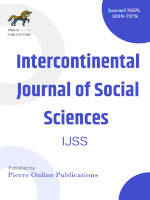The effect of YouTube on social isolation among young people
Main Article Content
Abstract
This research aims to examine the effect of YouTube usage on social isolation among young people, in light of the growing reliance on modern digital platforms by adolescents. The study employed a descriptive approach, using a questionnaire administered to a random sample of 30 secondary school students Abbassia district, Cairo. Findings revealed that YouTube is primarily used for entertainment, replacing traditional television, satisfying curiosity, and, to a lesser extent, for educational purposes. The results indicated that these motives significantly contribute to increased levels of social isolation among adolescents. Participants reported experiencing difficulties in forming friendships and occasionally feeling unaccepted in their social environments. Despite these findings, the study showed no statistically significant differences between males and females in terms of vulnerability to social isolation resulting from YouTube use. The overall results suggest that excessive engagement with YouTube contributes to heightened feelings of isolation, which may lead to broader social, psychological, and health-related issues among youth. Based on these conclusions, the study recommends increasing awareness of the potential dangers of unregulated YouTube consumption. It also calls for the implementation of targeted programmes and activities aimed at promoting healthy digital habits among adolescents. Furthermore, the study encourages the conduct of future experimental and mixed-method research to explore the phenomenon more deeply and support evidence-based interventions within the local community.

